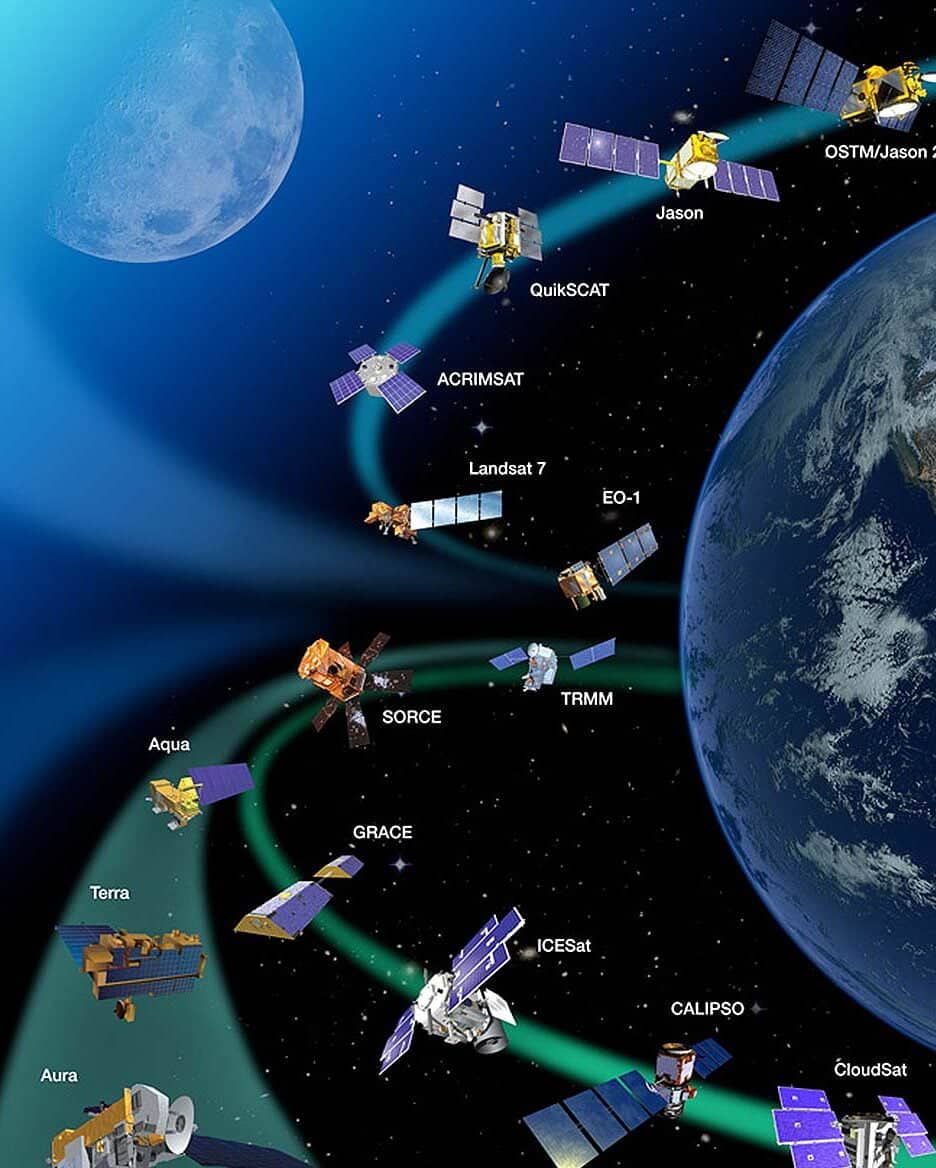The Earth’s moon is a natural satellite that orbits around our planet. It holds the distinction of being the closest satellite to the Sun, as neither Mercury nor Venus possess any satellites of their own. Once the sun sets, the moon is the second most luminous object visible in our sky.
When considering its size, the moon is the fifth largest natural satellite in the solar system. The average distance between the Earth and the moon is approximately 384,467 kilometers, which is equivalent to about thirty Earth diameters. Notably, the moon is the sole celestial body beyond Earth that humans have had the opportunity to explore. But why is it called the moon?
Moons can also be found orbiting other planets
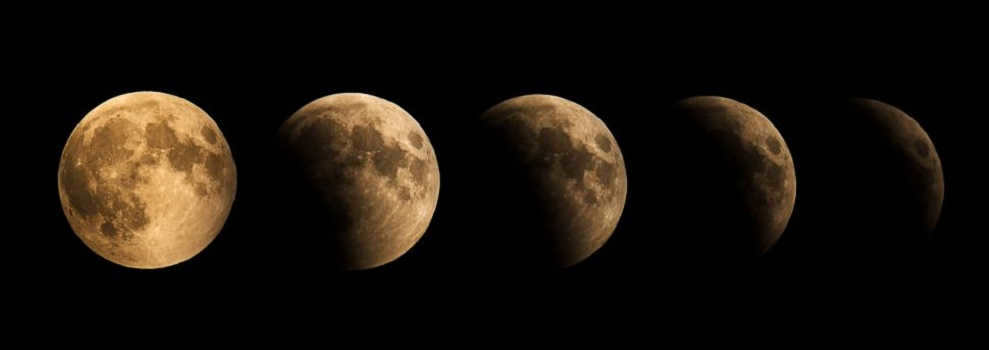
It is interesting to note that the term “moon”, which is written with a lowercase letter, is used to refer to the natural satellites of planets. At present, there are a total of 146 officially recognized moons in the solar system, with an additional 27 awaiting confirmation of their status.
Interestingly, all of the officially recognized moons have been given names, typically derived from characters in ancient myths or from the works of renowned playwright William Shakespeare. Examples of such names include Titan, Prometheus, and Callisto. However, Earth’s satellite is the only one without a poetic name; it is simply called the Moon. This raises the question of why the Earth’s moon lacks a more imaginative name and what significance this name holds.
Galileo’s breakthrough

The Earth’s satellite has been observed by humans since ancient times. When the Italian scientist Galileo Galilei pointed his telescope towards the sky in 1610, he discovered small rotating spots of light in Jupiter’s orbit, revealing the existence of satellites around other planets. Prior to this discovery, it was not known that other planets also had moons.
Initially, the name given to the moon was written with a lowercase letter and derived from the Latin word “luna,” which means “month.” This term was not considered official or scientific. However, scientists often have a fondness for Latin, and thus the name stuck.
In the same way, the “sun” used to be written with a lowercase letter. Once it was discovered that the stars in the sky are actually the same as our sun, the capitalization of our celestial body’s name changed. Therefore, distinguishing whether a word is a common noun or a proper noun holds significant significance in the field of astronomy.
The Moon Calendar
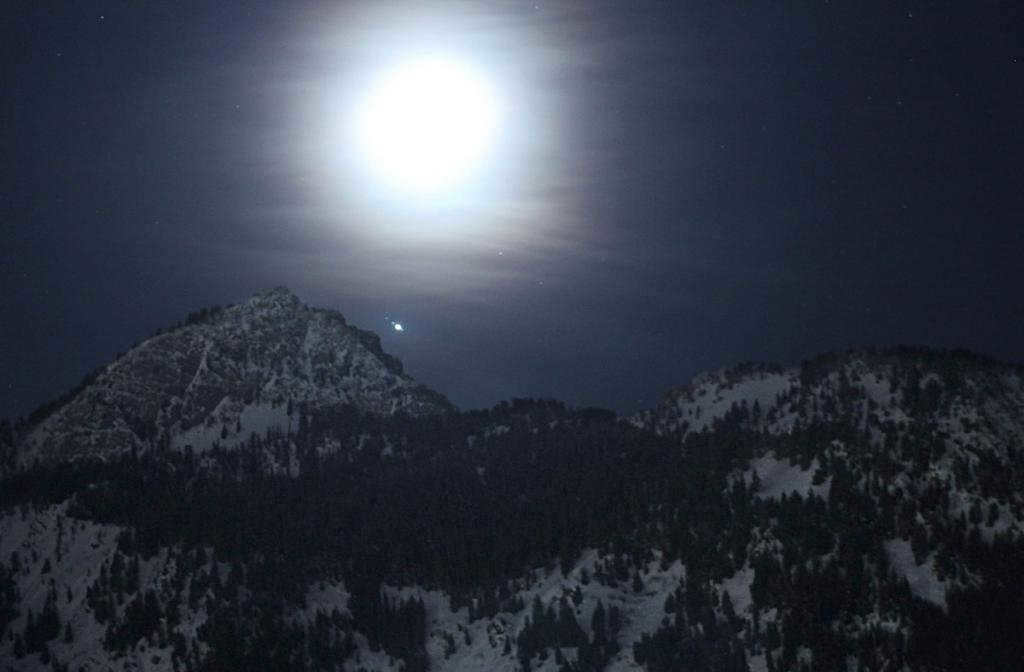
When it comes to the significance of the term “Moon,” it is derived from the Latin word “month.” What does this imply? Many years ago, individuals observed that the appearance of the celestial body in the night sky changes in a systematic manner. The various lunar phases repeat themselves at specific time intervals.
Due to this observation, the lunar calendar emerged as one of the earliest calendars used by people in their daily lives. Consequently, the term “lunar month” was coined. Astronomers refer to it as the “sideric month,” which signifies the measurement of motion relative to the stars.
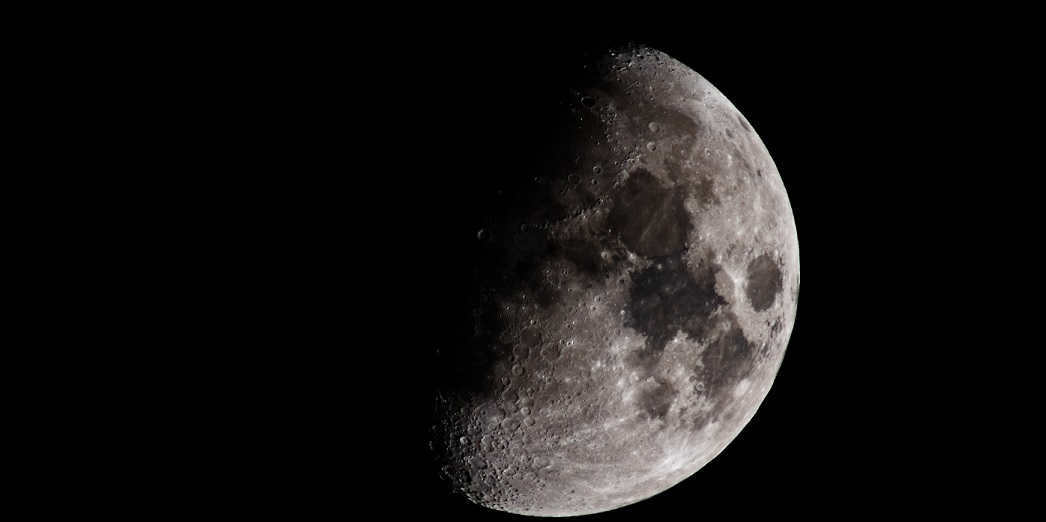
The moon, which is the closest celestial object to Earth, is easily visible and illuminates the night sky with its ever-changing shape. As a result, children are often fascinated by the moon.
So how can we explain the moon to a child in a simple and accurate way?
Earth’s Natural Satellite
When people are asked what the moon is, they typically respond with “A satellite of the Earth.” This is a completely accurate answer. Just like in everyday life, where a companion is someone who accompanies you on your journey, the Moon follows the Earth in outer space.
It’s important to understand that the Moon is the only natural satellite of the Earth, meaning it formed without any human intervention. While the Earth has many satellites launched for various scientific research, communication, and television purposes, they are all artificial satellites created by humans.
Answering this question definitively is not possible. Scientists have proposed several theories:
- One theory suggests that the Moon broke away from the Earth when a large celestial object collided with it.
- Another theory suggests that the Moon was originally an asteroid that came close to Earth and was captured by its gravitational pull, becoming a satellite.
- Some scientists believe that the Moon formed from cosmic dust, while others propose that it was the result of multiple smaller moons merging together.
- There is also a theory that suggests the Moon was “pulled” from another planet by the Earth’s gravitational force.
Regardless of its origin, the Moon has been a companion to Earth for an incredibly long time, forming shortly after the Earth itself – over 4.5 billion years ago.
What is preventing the Moon from drifting farther from Earth?
Every celestial body experiences gravitational attraction, which is influenced by their mass and the distance between them. As the mass of an object increases, so does the strength of the gravitational pull, but this force diminishes as the distance between objects increases.
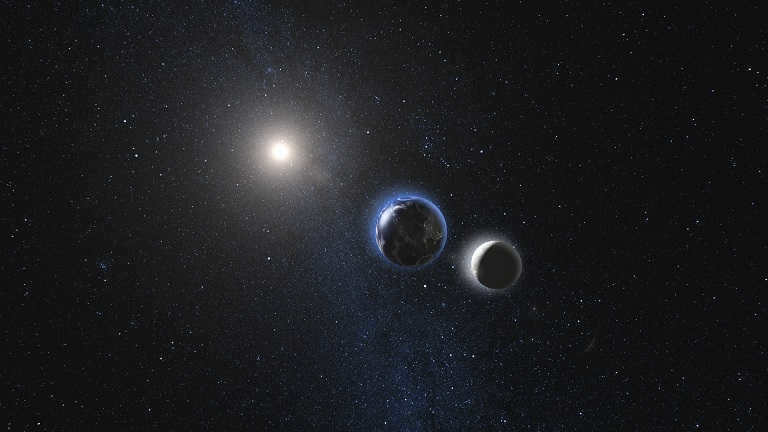
Due to its substantial mass and considerable distance from Earth, the Moon is unable to escape from or merge with our planet. The gravitational force acting upon it is precisely balanced, keeping it in orbit around Earth without letting it break free.
How far is it from us to the Moon?
The Moon, being the nearest celestial body to Earth, is approximately 380 thousand kilometers away.
While this distance may seem vast, in the grand scheme of the cosmos, it is actually quite close.
It is so close, in fact, that a satellite can reach the Moon in under four hours. A spacecraft, on the other hand, takes a bit longer, typically around 3 to 5 days. Even so, this is still relatively short compared to the duration of voyages to other objects in space.
Fascinatingly, the Moon is slowly drifting away from Earth at a rate of 3.8 centimeters per year. However, at these immense distances, this movement is imperceptible.
The Dimensions and Form of the Moon
The Moon’s mass is 81 times less than that of Earth, and its size is 4 times smaller. This makes it a rather sizable celestial object, leading some scientists to refer to Earth and the Moon as a binary planet system rather than a planet with a satellite.
From our perspective on Earth, the Moon appears perfectly round. In reality, its shape is close to that of a sphere, with a radius of 1737 km. However, it is not a perfect sphere, as it is slightly flattened.
The Moon lacks a substantial atmosphere, resulting in a thin layer that offers little protection from sunlight, radiation, and heat retention. Consequently, the Moon experiences significant temperature fluctuations. When exposed to the Sun’s heat, the surface temperature can soar to +127 degrees Celsius. Conversely, when the Sun sets, temperatures can plummet to -173 degrees Celsius.
Unlike Earth, the Moon does not experience distinct seasons such as “winter” and “summer.” This absence is due to the Moon’s axial tilt, which is less than 2 degrees in comparison to Earth’s tilt of 23.44 degrees.
The Appearance of the Moon’s Surface
Even without the aid of a telescope, it is evident that the surface of the Moon is not homogeneous: it boasts both dark and light regions. These distinguishing features were noted by early astronomers who, drawing a parallel with Earth, referred to the dark areas as “seas” and the lighter, more elevated regions as “continents.”
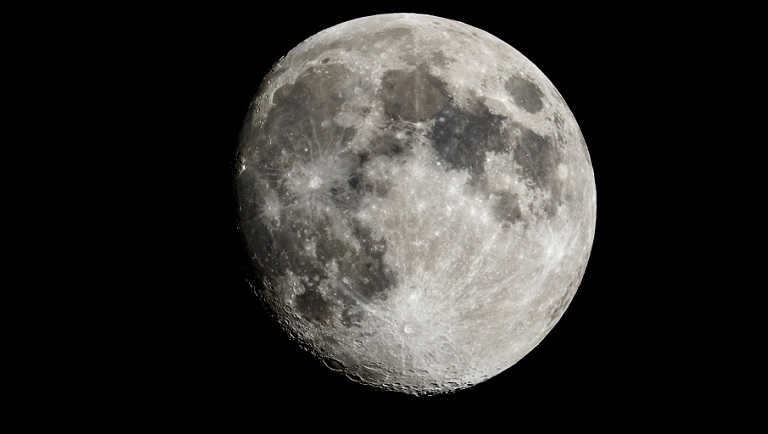
However, the lunar “seas” differ greatly from those on Earth. They do not contain any water. Instead, these “seas” are depressions that have been filled with solidified volcanic lava. They cover approximately 16 percent of the Moon’s surface. The largest “lunar sea” is known as the Ocean of Storms.
The entire surface of the Moon, including both the seas and the continents, is dotted with numerous craters of various sizes. These craters have a shape similar to that of a plate, with a flat bottom and raised edges. There are over 100,000 craters in total, and new ones are constantly forming.
Scientists believe that these craters are the result of impacts from various celestial bodies, such as comets, asteroids, and meteorite fragments, on the lunar surface.
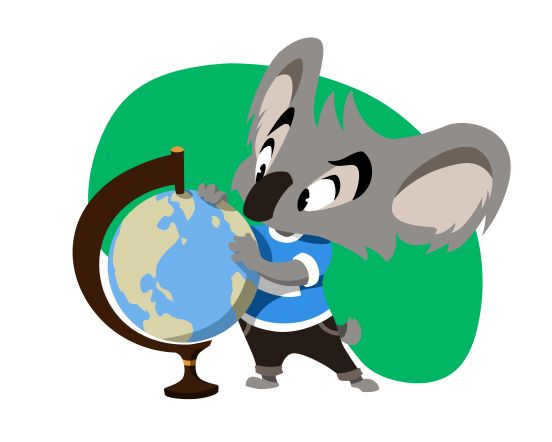
Our online course “Amazing Planet” introduces children to the most important destinations in Russia and around the world in an engaging format through games, stories, and riddles.
The Internal Structure of the Moon
Similar to a walnut, the Moon has a structure consisting of a core, mantle, and crust.
The core of the Moon is primarily composed of iron, with a solid inner layer (approximately 240 km) and a liquid outer layer (approximately 300 km).
Located above the core and below the crust is the mantle, which is approximately 1000 km thick. The mantle is primarily composed of metals such as magnesium, iron, and silicon oxides.
The crust is the thinnest upper layer, measuring only about 50 km in thickness. It is covered with lunar soil known as regolith, which is a gray and porous material.
Stages of Lunar Illumination
One fascinating characteristic of the Moon is its ability to transform its appearance: we observe it in the celestial sphere as a sphere, a crescent, or even a slender crescent. There are times when it remains completely hidden from view.
The reason the Moon illuminates the night sky is not because it produces its own light like the Sun, but rather due to the reflection of sunlight off its surface.
As the Moon moves through space, its position in relation to the Sun and the Earth changes, resulting in varying degrees of illumination. The visible shape of the Moon from Earth is referred to as its lunar phase.
During the period referred to as the new moon, the Moon is invisible: it is positioned between the Earth and the Sun, preventing any reflected light from reaching our sight.
Therefore, the Moon experiences various stages:
new moon – waxing crescent – first quarter (when exactly half of the circle, its right side, is visible) – full moon – waning gibbous – last quarter (half of the moon is illuminated again, but the other half), old moon. Then it goes back to the new moon phase.
There is an interesting way to determine the phase of the Moon: when only a crescent shape is visible in the sky, you need to observe its direction. If you can place a stick to the left and it forms the letter “P”, then the Moon is in its waxing phase. However, if it resembles the letter “C”, then it is in its waning phase.
What is a “Month?”
A “month” is not a celestial body in itself. It refers to one of the distinct phases of the Moon. During this phase, we observe only a small portion of the Moon illuminated, resembling a sickle shape.
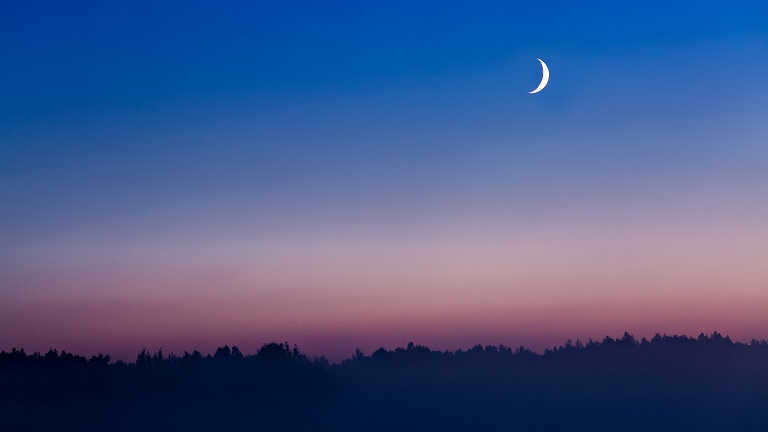
The reason behind this name derives from ancient times: our ancestors referred to the Moon as the illuminated portion of the lunar body, while the Month represented the unilluminated part of the Moon.
However, even in the present day, it remains customary to designate the illuminated crescent as the “horned Month” and the complete spherical lunar body as the “Moon”.
Lunar Eclipses
A lunar eclipse is the event when the Earth obstructs the sunlight that is reaching the Moon. It can either be a partial eclipse or a total eclipse.
During a partial eclipse, the sunlight is not completely blocked.
However, even during a total eclipse, the Moon is still visible but appears to change its color to a dark red hue. This change in color is a result of the angle at which the sun’s rays hit the Moon. As the rays pass through the Earth’s atmosphere, they get scattered, similar to what happens during a sunset.
The Moon orbits the Sun along with the Earth, but it also rotates on its own axis. So why don’t we see different sides of it? Why is there a mysterious “back side” that remains hidden from us?
It turns out that the Moon takes the same amount of time to complete one rotation on its axis as it does to orbit around the Earth – 27.3 days. This means that the Moon always keeps the same side facing the Earth.
However, the mystery of the Moon’s “back” side has long been solved. It was first photographed by research vehicles in 1959, and since then we have created surface maps, atlases, and even a globe of the Moon.
The back side of the Moon has a slightly different terrain compared to the side we see. It has fewer “seas” and more mountains.
Exploring the Moon
Being the nearest celestial body to our planet, the Moon naturally became the primary focus of space researchers.
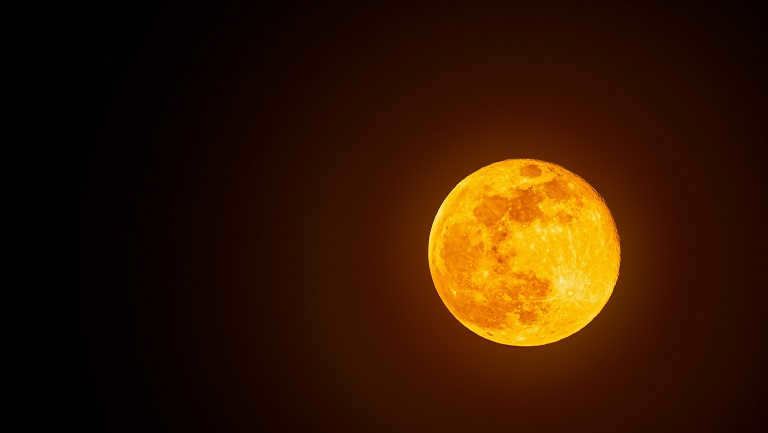
In the beginning, people simply observed its appearance, movement, and phases.
With the invention of the telescope (in 1609), it became possible to conduct more detailed studies of the lunar surface, including the examination of its mountains and craters. These features were documented and given specific names.
Starting from the mid-19th century, the Moon was actively photographed and closely examined, although these studies were still limited to its external characteristics.
It was only after a spacecraft was launched to the Moon in 1959 that researchers were able to gather truly significant data about it.
Samples of lunar soil were collected, the Moon’s atmosphere was investigated, and even water was discovered, although it was only in the form of ice.
Up to this point, only the Earth and the Moon have been explored by humans. The first person to step foot on the Moon was Neil Armstrong, an American astronaut, who accomplished this feat on July 20, 1969. In total, 12 individuals from Earth have had the opportunity to walk on the lunar surface.
Does life exist on the Moon?
Given that the Moon has been extensively studied, scientists are confident that life, as we know it on Earth, cannot exist there. The Moon’s atmosphere is too thin and the temperature variations are too extreme to support living organisms in such conditions.
What is the impact of the Moon on the Earth?
Throughout history, the Moon has remained an enigmatic and powerful entity that has been linked to various phenomena on Earth.
While many of these theories have been discredited, some have been proven to be true.
One such example is the effect of the Moon’s gravitational forces on the tides of Earth’s water bodies. The ebb and flow of water are more pronounced in areas closer to the Moon.
Additionally, the Moon’s influence is also responsible for the gradual slowing down of Earth’s rotation. Over the course of a century, the length of a day on our planet increases by a mere 2.3 milliseconds.
- The Moon’s surface is actually dark gray, almost black, but it appears white to us because it reflects sunlight.
- Before humans, steppe turtles, flies, beetles, and various plants were aboard the Soviet spacecraft Zond-5, which orbited the Moon on September 15, 1968.
- Maps of the Moon feature portraits of individuals who have had features on its surface named after them, such as seas, mountains, and other objects.
- The Moon’s gravitational force is 6 times weaker than Earth’s, making it a lot of fun to jump and much easier to lift weights.
- Because the Moon lacks an atmosphere, there are no gradual transitions between day and night; it changes instantly.
Here’s something that might catch your attention:
Is your child showing a genuine interest in space? Discover more intriguing information about space and the planets in our other articles.

We offer an enjoyable and engaging approach to teaching physics and science.
Our short courses are specifically designed to cater to children’s learning styles and interests.
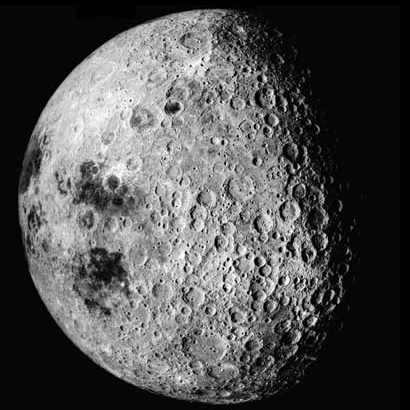
The solar system is composed of numerous celestial bodies, which encompass the primary star known as the sun, the planets, and their respective moons. Additionally, comets, asteroids, and planet-like objects are also recognized. For centuries, humans have actively explored outer space and studied the Earth’s position within it, leading to many significant discoveries. However, in recent times, the prevailing theory that the Moon serves as a natural satellite of the Earth has been met with skepticism by some. There is a hypothesis suggesting that it may be classified as one of the “dwarf planets.” This raises the question of the validity of such claims and prompts further investigation.
What is the Moon – a planet, a star, or something different?
In order to determine whether the Moon is a planet or not, it is important to understand the criteria that define a celestial body as such. According to the definition provided by the International Astronomical Union (IAU), there are three key factors that determine whether an object can be classified as a planet:
- The object must have its own consistent orbit around the central star of its system.
- It should be capable of clearing its orbit, meaning that it can remove any obstacles in its path.
- The object must have sufficient mass to become spherical under the influence of its own gravity.
The fact that the Moon does not have its own orbit around the Sun is a clear indication that it cannot be classified as a planet.
Interestingly, the Moon does not emit its own light, its composition does not suggest such a phenomenon. This is why it is not as radiant as the Sun. It reflects about 7% of the sunlight it receives and from our perspective on Earth, we can only see the side that is illuminated by the Sun’s rays.
Through a process of elimination and analysis of other evidence, we can conclude that when referring to our “nighttime luminary,” we are referring to a different celestial body, not a star or another planet. It is more plausible to consider the Moon as a satellite of the Earth.
Theory: The Moon is an Earth’s satellite
There is ample evidence supporting the claim that the Moon is an Earth’s satellite. The categorization of the Moon as a satellite is justified by meeting the established criteria.
How fascinating! There exists yet another intriguing hypothesis. The Earth and the Moon did not come into existence simultaneously. The Moon, in fact, emerged much later than the Earth, approximately four and a half billion years ago, and is believed to be a remnant of the “giant collision” between Teia (a planet resembling Mars) and our own planet Earth.
It has been unequivocally and indisputably proven that satellites orbit around planets, and this fact has been convincingly demonstrated with regards to the Moon. The Moon orbits the Earth in an elliptical pathway, completing a full revolution every 27.3 days.
Cosmic characteristics: structure, atmosphere, visible part, and other reliable research findings
After determining whether the Moon is a planet or a satellite, it is natural to develop a broader interest in the overall cosmic characteristics of this celestial body. Let’s begin by highlighting the following:
- Distance from Earth – 384 thousand kilometers;
- Radius at the lunar equator – 1738.14 kilometers;
- Mass – 7.35*10,22 kg (comparatively, this is only 1/81 part of the Earth’s mass);
- The Moon’s orbital speed around the Earth: it takes 27.3 days for one orbital revolution at an average speed of approximately 1 km/s. Interestingly, the Moon also completes one revolution around its axis in 27.3 days;
- The temperature on the surface of the Moon can range from -169 degrees Celsius to 122 degrees Celsius;
- The total area of the Moon’s surface is 3.793⋅10 7 km²;
- The average density of the Moon is 3.3464 g/cm³, which is 40% less than Earth’s;
- There is no significant difference in the Moon’s polar regions;
- Although there have been reports of small amounts of water detected on the Moon, further research is needed to confirm this;
- The Moon does not have an atmosphere.
Interesting fact! The Moon takes the same amount of time to orbit the Earth and complete one rotation on its own axis (27.3 days), which is why we always see the same side of the Moon.
Let’s now explore the findings of scientists regarding the composition of the Moon. The satellite bears a striking resemblance to our own planet, with a core at its very center. The core is believed to be a liquid, situated approximately 1500 km beneath the surface. While the core is rich in iron, its size is relatively small on the grand scale, resulting in a weak magnetic field for the Moon. The structure can be visualized as follows: the core lies beneath the lower mantle, followed by the inner middle mantle, which has a thickness of around 600 km. Deeper still is the upper mantle, extending another 400 km. Finally, the outermost layer is comprised of the Moon’s crust, covered in lunar soil. Seismic studies have revealed that the crust’s thickness ranges from 60 to 100 kilometers.
There is no atmosphere surrounding the satellite. Temperature differences of hundreds of degrees exist. There are no gusts of wind. It is completely quiet. The sky above the Moon remains perpetually black, which is due to the absence of air that creates the color blue.
The Moon’s surface is diverse, not limited to the craters seen from Earth. The landscape includes ridges, domes, narrow valley-like lowlands (troughs), crevices, and canyons – although there are significantly fewer of them compared to our planet. In general, the Moon can be categorized into 2 types:
There are many historical figures who have craters named after them on the side of the Moon that is visible from Earth: Copernicus, Ptolemy, and many others. On the opposite side of the Moon, there is a massive depression known as Eitken with a diameter of 2250 km. This depression is located at the basin of the South Pole. The Eastern lunar “sea” is also quite remarkable, as it is a prime example of a multicircular crater.
When it comes to the chemical composition of the Moon, it is worth mentioning that the majority of its surface is covered by regolith, which is essentially residual soil. The regolith contains various oxides, including silicon, sodium, magnesium, titanium, calcium, and chromium.
Let’s talk a little about the phases of the moon, shall we? Throughout history, humanity has been fascinated by the ever-changing size of our lunar companion. This phenomenon can be explained by the moon’s rotation around the Earth, which causes it to constantly shift its position in relation to the Sun, the main star of our solar system. This shifting results in a change in brightness. Consequently, observers on Earth are able to witness a sequence of different lunar shapes: first, a massive and luminous circle, then a partially obscured side, followed by a crescent shape, and finally a slender sickle that eventually disappears from view. This cycle then repeats itself in reverse order: sickle, crescent, incomplete circle, and ultimately, a bright and full moon.
Research, Exploration of the Enigmatic Object, New Discoveries, and Presumed Future Prospects
The investigation of the natural satellite of Earth commenced in ancient times, with scholars displaying active interest in it as early as 2200 years ago. Hipparchus was the first to make calculations regarding its potential dimensions and to establish the fact of its motion, along with the inclination of its orbit in relation to the ecliptic. With the advent of the telescope, D. Riccioli was able to create the first lunar map, even without physically visiting and observing the terrain firsthand. He referred to the dark areas as “seas,” implying that they resembled those found on Earth. While it has since been discovered that these areas are actually craters, scientists still utilize this term.
Significant progress has been made in the study of this entity in the 20th century, thanks to the successful deployment of space stations and subsequent manned spacecraft missions, such as Apollo. In 1969, Neil Armstrong made history by becoming the first human to step foot on the surface of the Moon. As Earth’s satellite, the Moon holds the distinction of being the first celestial body ever visited by mankind.
Currently, research is ongoing and despite the significant progress, there are still numerous unanswered questions. The possibility of colonizing two celestial bodies, the Moon and Mars, is a topic of great interest to modern society. However, this is a distant prospect that may take several millennia to realize. Scientists are not focused on using the Moon for human settlement and creating habitable conditions, as nature has its own limitations. Instead, the emphasis is on utilizing the satellite as a cutting-edge launch site to facilitate the deployment of interplanetary stations and enable further exploration of the vast reaches of the Galaxy.

This lesson provides students with an introduction to Earth’s only satellite, the Moon. It explores the factors that contribute to the Sun and Moon appearing the same size in the sky, and presents a visual representation of the Moon’s phases. Students will learn how to determine if the Moon is growing or waning, and will have the opportunity to examine the Moon’s surface through photographs. The lesson presents all material in a student-friendly format.
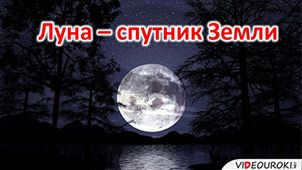
At the moment, you are unable to watch or share the video lesson with your students
In order to watch this and other video lessons in the kit, you will need to add it to your personal account.
Unlock amazing opportunities



Outline of the Lesson: “The Moon is an Earth Satellite”
Greetings, my beloved companions! There are few enigmas remaining in my compendium of celestial wonders. In our previous encounter, you acquired a wealth of captivating and enlightening knowledge regarding the third enigma chronicled within the tome entitled “The Azure Globe – Earth.” In this chronicle, I expounded upon our remarkable planet, the sole entity in possession of the precious trifecta: atmosphere, aqueous reservoirs, and thriving organisms.
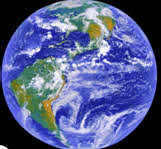
Do you know why our beautiful planet is often referred to as the “blue” planet? That’s because a majority of its surface is adorned with vast seas and majestic oceans. And now, my friends, I have an intriguing secret to share with you – the remarkable phenomenon known as “Earth’s satellite, the Moon.”

Indeed, indeed, this enigma of the Moon, which we observe each night in our celestial expanse.
All right, companions, the lunar orb – represents the nearest astronomical entity to our planet. It orbits around our world and together with it encircles the sun. For this reason, the Moon is referred to as an Earth satellite.
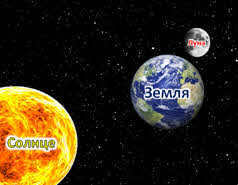
Now, my friends, I invite you to envision the apparent sizes of the Sun and the Moon in our vast sky. It may surprise you, but both celestial bodies appear to be equal in size. However, this perception, my dear friends, is quite far from reality!
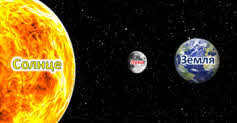
The Sun appears to be the same size as the Earth’s satellite, the Moon, even though it is much bigger. This optical illusion is due to the Sun being much farther away from our planet than the Moon. The farther away an object is, the smaller it appears to us.
Here’s another interesting fact: the Moon, like all other celestial bodies, does not emit its own light. We are able to see it in our starry sky because it is illuminated by the Sun’s rays. These rays fall on the Moon’s surface and reflect, providing illumination for our planet.
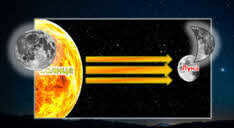
Have you ever observed that in the sky we can witness both a circular shape of the Moon and a crescent shape of the Moon? The mystery behind this transformation lies in the fact that the Moon’s shape, or, in other words, its phase, in our sky is determined by the portion of it that is illuminated by the Sun at any given moment. The condition when the Moon is not visible in the sky is referred to as a new moon.
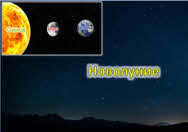
This phenomenon occurs when our satellite is positioned between the Sun and the Earth, rendering it invisible from the Earth’s surface. However, as the Moon continues its orbit, the Sun gradually illuminates different portions of the Moon. As a result, we observe the Moon in the form of a crescent, which increases in size each night. Scientists refer to this type of Moon as a “waxing” Moon.
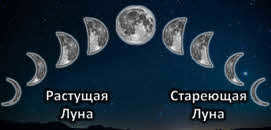
When the Sun fully illuminates the Moon in our night sky, we witness a phenomenon known as a full moon. Following the full moon, the Moon’s appearance undergoes a transformation: we observe a crescent shape, but in the opposite direction, which gradually diminishes with each passing night. This particular phase of the Moon is referred to as “waning.” Subsequent to this lunar stage, a new moon occurs, marking the start of the Moon’s growth and subsequent aging process. Thus, the Moon has been continuously metamorphosing for an extensive duration.
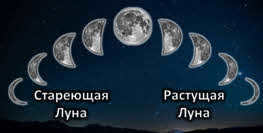
Would you like me to teach you how to recognize the different phases of the moon? Pay close attention! If the crescent moon resembles the letter “S” S, it’s waning. If the crescent moon looks like the letter “C” but flipped, and if we mentally place a stick to it, it forms the letter “P” P, then the moon рwill be waxing.
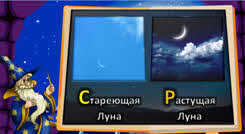
Typically, fellas, we can witness the ascending Moon in the atmosphere during the night, and the waning Moon in the morning. That’s how straightforward and effortless it is to ascertain whether the Moon is maturing or expanding, our comrade!
And now, pals, let’s examine a snapshot of the Moon from outer space! You perceive, there’s absence of water or atmosphere on its exterior, indicating that there’s no existence on the Moon!
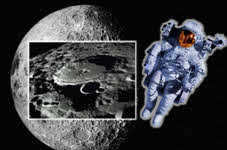
That’s the reason, folks, why the astronauts who once explored the Moon’s surface were equipped with specialized spacesuits that allowed them to breathe and move with ease. The entire lunar surface is covered in rocky terrain, making it very rough and uneven. Additionally, there are numerous craters formed by meteorite impacts.
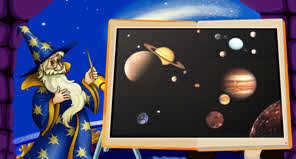
This is the current state of affairs: our planet has only one satellite – the Moon! Other celestial bodies within the solar system also possess natural satellites. In fact, some of these planets have a larger number of satellites than Earth! The existence of these satellites was discovered through humanity’s exploration of outer space. However, my friends, I will delve into this topic in our next conversation. For now, let us recapitulate the mysteries that you have uncovered from today’s clandestine knowledge.
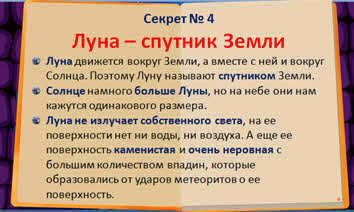
Hey there, everyone! That’s a wrap! As per usual, I’m excited to meet up with you all again soon! Farewell!
The Earth’s only satellite, the moon, exerts a tremendous influence on our planet. Today, we will delve into its various aspects and uncover its intriguing characteristics. The moon is brimming with captivating information, making it an intriguing subject of exploration. Let’s uncover the reasons behind its significance!
There are over 150 satellites within our solar system alone. The majority of these satellites orbit around gas giants, while some planets have no satellites at all. Here is a compilation of the planets with the highest number of satellites:
- Mercury – No satellites have been discovered
- Venus – No satellites have been discovered
- Earth – 1
- Mars – 2
- Neptune – 14
- Uranus – 27
- Saturn – 62
- Jupiter – 79
Our planet possesses a single satellite, known as the moon. Although it is not the largest satellite within the solar system (for example, Saturn’s satellite Titan is twice the size of our moon), it is the largest satellite in comparison to the planet it orbits. Due to this size ratio, some astronomers refer to the Earth-Moon system as a “two-planet system”.
The gravitational force exerted by the Moon has a considerable impact on the ocean tides. As the Moon orbits around the Earth, it attracts the water towards itself, causing high tides. On the opposite side of the Earth, a phenomenon known as tidal change occurs, resulting in low tides. One remarkable illustration of this tidal change can be observed in the Bay of Fundy, Canada, where the water level decreases by 55 feet or 16 meters from high tide to low tide.
The initial proposal that the Moon is increasing its distance from Earth was made by George Darwin, the son of Charles Darwin. In 1878, George put forward his hypothesis regarding the origin of the Moon. Although his fission hypothesis was ultimately proven incorrect, his extensive understanding and analysis of tides led him to the accurate conclusion that our Moon is indeed moving away from Earth. It took 95 years for his conclusion to be proven correct, when the Apollo astronauts placed mirrors on the Moon for scientific research. They discovered that the Moon is actually moving away from Earth at a rate of approximately 3.5 centimeters per year (1 1/2 inches).
No need to worry, by the time the Moon’s orbit decelerates and stabilizes, our Sun will have transformed into a red giant and incinerated our planet.
The stability of the Earth’s climate is maintained by the Moon, which plays a crucial role in preserving its tilt. Without this stability, the North Pole would experience significant fluctuations in temperature. Thanks to the Moon, we can enjoy the four distinct seasons throughout the year. If the Moon were absent or smaller in size, the number of seasons would be reduced, leading to a drastically different way of life.
Computer simulations suggest that our Moon originated from a celestial body approximately the same size as Mars. When this object collided with Earth, our planet assimilated a considerable portion of it, including dense elements like iron. Over time, these events culminated in the creation of the Moon. This concept is commonly referred to as the “Impact Theory”. The forces involved were so momentous and immense that they set our magnificent planet in motion, resulting in the establishment of our familiar 24-hour days.
The distance between the Earth and the Moon measures approximately 234,000 kilometers. This vast distance is so immense that if we were to embark on a non-stop car journey at a speed of 65 miles per hour, it would take us approximately 4 months, 28 days, and 8 hours to reach our destination.
The diameter of the Moon measures around 2160 miles, which is approximately one-fourth the size of the Earth. The Moon’s rotation is synchronized with its orbit around the Earth, causing it to always present the same face to our planet. As a result, a full day on the Moon is equivalent to 27 Earth days. Additionally, due to its smaller size and lower mass, the Moon has only one-sixth the mass of the Earth.
Because the Moon lacks an atmosphere, it exists in the vacuum of space. As a consequence, the sky on the Moon is perpetually black, as there are no molecules to scatter the Sun’s light. Furthermore, the temperature on the Moon can soar to +132°C under direct sunlight and plummet to -173°C during the night.

